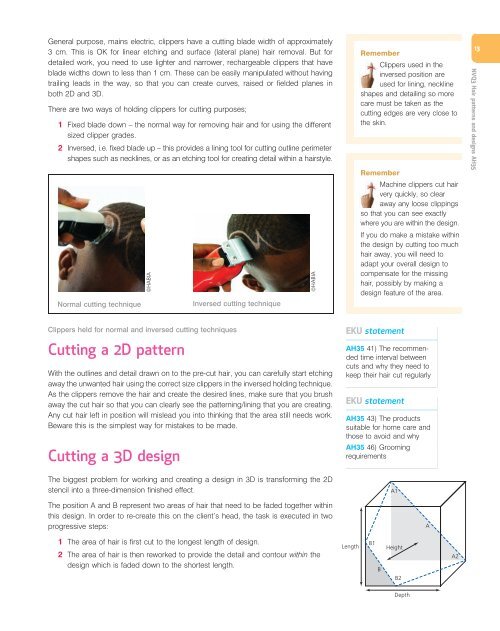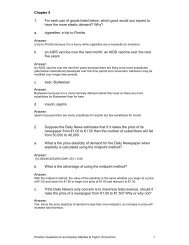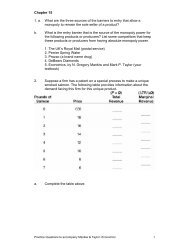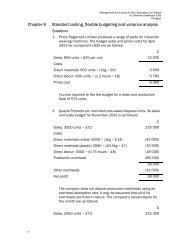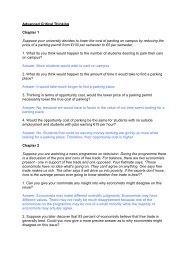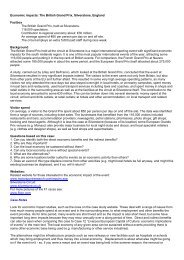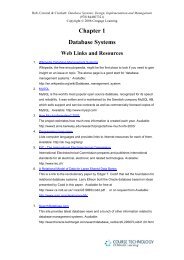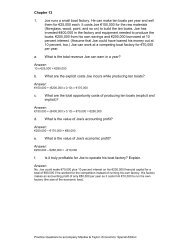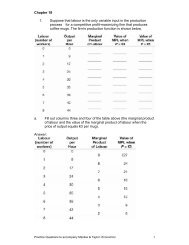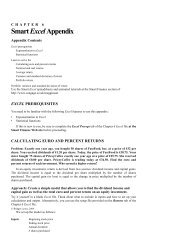Web chaptertwo Hair patterns and designs - Cengage Learning
Web chaptertwo Hair patterns and designs - Cengage Learning
Web chaptertwo Hair patterns and designs - Cengage Learning
You also want an ePaper? Increase the reach of your titles
YUMPU automatically turns print PDFs into web optimized ePapers that Google loves.
General purpose, mains electric, clippers have a cutting blade width of approximately3 cm. This is OK for linear etching <strong>and</strong> surface (lateral plane) hair removal. But fordetailed work, you need to use lighter <strong>and</strong> narrower, rechargeable clippers that haveblade widths down to less than 1 cm. These can be easily manipulated without havingtrailing leads in the way, so that you can create curves, raised or fielded planes inboth 2D <strong>and</strong> 3D.There are two ways of holding clippers for cutting purposes;1 Fixed blade down – the normal way for removing hair <strong>and</strong> for using the differentsized clipper grades.2 Inversed, i.e. fixed blade up – this provides a lining tool for cutting outline perimetershapes such as necklines, or as an etching tool for creating detail within a hairstyle.Normal cutting techniqueªHABIAInversed cutting techniqueªHABIARememberClippers used in theinversed position areused for lining, necklineshapes <strong>and</strong> detailing so morecare must be taken as thecutting edges are very close tothe skin.RememberMachine clippers cut hairvery quickly, so clearaway any loose clippingsso that you can see exactlywhere you are within the design.If you do make a mistake withinthe design by cutting too muchhair away, you will need toadapt your overall design tocompensate for the missinghair, possibly by making adesign feature of the area.13NVQ3 <strong>Hair</strong> <strong>patterns</strong> <strong>and</strong> <strong>designs</strong> AH35Clippers held for normal <strong>and</strong> inversed cutting techniquesCutting a 2D patternWith the outlines <strong>and</strong> detail drawn on to the pre-cut hair, you can carefully start etchingaway the unwanted hair using the correct size clippers in the inversed holding technique.As the clippers remove the hair <strong>and</strong> create the desired lines, make sure that you brushaway the cut hair so that you can clearly see the patterning/lining that you are creating.Any cut hair left in position will mislead you into thinking that the area still needs work.Beware this is the simplest way for mistakes to be made.Cutting a 3D designThe biggest problem for working <strong>and</strong> creating a design in 3D is transforming the 2Dstencil into a three-dimension finished effect.The position A <strong>and</strong> B represent two areas of hair that need to be faded together withinthis design. In order to re-create this on the client’s head, the task is executed in twoprogressive steps:EKU statementAH35 41) The recommendedtime interval betweencuts <strong>and</strong> why they need tokeep their hair cut regularly............................................................................................................................................................................................................................................................................................................EKU statementAH35 43) The productssuitable for home care <strong>and</strong>those to avoid <strong>and</strong> whyAH35 46) Groomingrequirements............................................................................................................................................................................................................................................................................................................A1A..1 The area of hair is first cut to the longest length of design.2 The area of hair is then reworked to provide the detail <strong>and</strong> contour within thedesign which is faded down to the shortest length.LengthB1BHeightB2A2Depth


